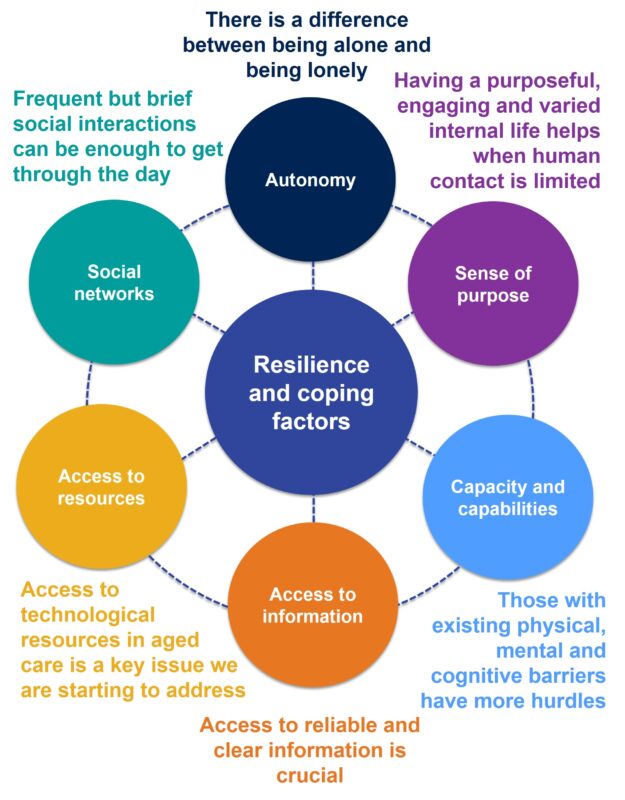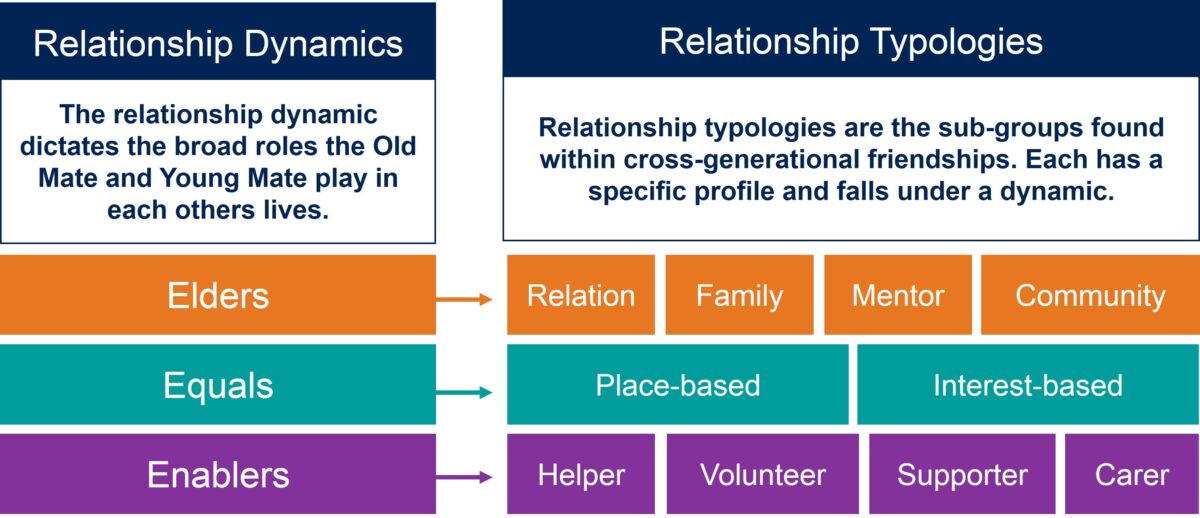Changing how we think about loneliness and connection to better support our elderly population suffering from social isolation – particularly in the face of COVID-19 and into the future.
Though a complex topic, it is evident that social isolation is a key contributing factor to poor mental health in the elderly. As we age, many people find themselves more alone – leaving the elderly vulnerable to social isolation and loneliness. For the elderly, life stressors, loneliness and poor mental health are often intertwined. These life stressors can result in isolation, loneliness or psychological distress in older people and place them at risk of related health problems such as cognitive decline, disablement, heart disease and depression3. Each year, around 800,000 people commit suicide globally with about a quarter of those suicides being people aged 60 or above. In Australia, men aged 80+ committed suicide more than any other group.
For my submission in the Australian Research Got Talent competition, I reached out to spur:org, a multi-award-winning suicide action charity, to collaborate on their first and oldest national campaign #OLDMATE. ##OLDMATE is an initiative that encourages people to pledge at least one hour per month to spend with an elderly person with the aim to reduce social isolation and loneliness. #OLDMATE then offers pledgers specific, fun, and easy activities to do with their “old mate”.
Approaching a vulnerable population in a pandemic
Initially, our ideas were focused on increasing the number of pledges and understanding their relationships, but then COVID-19 hit Australia, and new social barriers arose for us all from protective restrictions – and particularly for our elderly. The aged care facilities were abruptly locked down across Australia, accompanied by strict no visiting rules. Discussing this with Lee from spur:org, we were clear that the direction of the research had to pivot to address this new challenge of social distancing for their pledgers and old mates.
Reviewing the literature on social isolation, loneliness and connectedness for the elderly – it became apparent this is unprecedented research in a pandemic. Therefore, we needed qualitative research to help understand the issues first, before quantifying them in an online survey. But doing qualitative research with a difficult to reach population in a pandemic meant there would be challenges. The qualitative methodology had to be innovative and flexible – evolving to meet participant needs, adhering to protective health guidelines, and adapting to engage a vulnerable elderly audience. To accomplish this, I became participant-centric by adapting the method based on the individual’s needs and social distancing barriers. I heard from aged care facility managers hiring new people specifically to connect their residents to the outside world through smart devices and video calls, pledgers trying to talk to their Old Mate who is struggling to cope, elderly people enjoying a cup of tea across the retirement village fence and from distressed aged care residents struggling to make sense of their situation. There were so many stories.
The qualitative findings helped me design a focused online questionnaire with a clear hypothesis about the nature of these cross-generational relationships and the potential typologies of pledgers and old mates. The 1000 completed surveys with a random sample representative of the Australian population validated the qualitative research.
Changing the way we think about loneliness and connection
Key findings showed that spur:org needs to change the way they think about loneliness and connection. The current #OLDMATE initiative focuses on:
- Social connection needed to reduce loneliness and improve positive mental well-being
- Motivating this social connection through a pledge
- Engaging younger people to take this pledge
The key findings suggest that there are opportunities for spur:org to:
1. Rethink the needs
Loneliness is complex and even more so in COVID-19 (Figure 1) – by rethinking the needs of elderly Australians spur:org can take a holistic approach to loneliness and improving positive mental well-being through both social interactions and positive behaviours when alone.

Figure 1. Resilience and coping factors for the elderly before and during COVID-19
2. Rethink the pledge
Cross-generational friendship formation must be genuine (Figure 2) – by rethinking the pledge, spur:org can move from motivating to facilitating relationships. This can be through facilitating environments and frames of mind that can incite genuine friendship and foster existing relationships.

3. Rethink the audience
There are many ways that cross-generational friendships form naturally that spur:org can capitalise on. In fact, the research found ten different types of relationship typologies (Figure 3). By adapting their approach, spur:org can engage different audiences based on need. For example, this could be bringing old mates into the initiative as active and valuable contributors to the community. This could also mean reducing the target age to take a preventative approach.

Figure 3. Cross-generational relationship dynamics and typologies
Pivoting the initiative to meet the mission
From these opportunities to rethink about loneliness, the suggestion for spur:org was to adapt their engagement strategy to incorporate a new engagement model (Figure 4). This new engagement model prioritises and rationalises the role of spur:org and how they implement the initiative. Another suggestion was that spur:org could look at these opportunities about the nature of cross-generational friendships through the lens of a new engagement model developed from the findings. This model prioritises and rationalises the role of spur:org and how they should implement the initiative. It will have the greatest impact through three roles: The Catalyst, The Ringmaster and The Narrator. A living model, it can be used in different ways depending on how spur:org adapts or uses the opportunities previously identified. The model can also be used in a range of circumstances, depending on the situation and needs of the pledgers and old mate. For example, during COVID-19, the model could be used to resolve different risks. Adapting the engagement strategy to this model will allow spur:org to create an informed, clear and strategic path forward in addressing loneliness and social isolation for the elderly – now and into the future.

Figure 4. A new engagement model for spur:org


